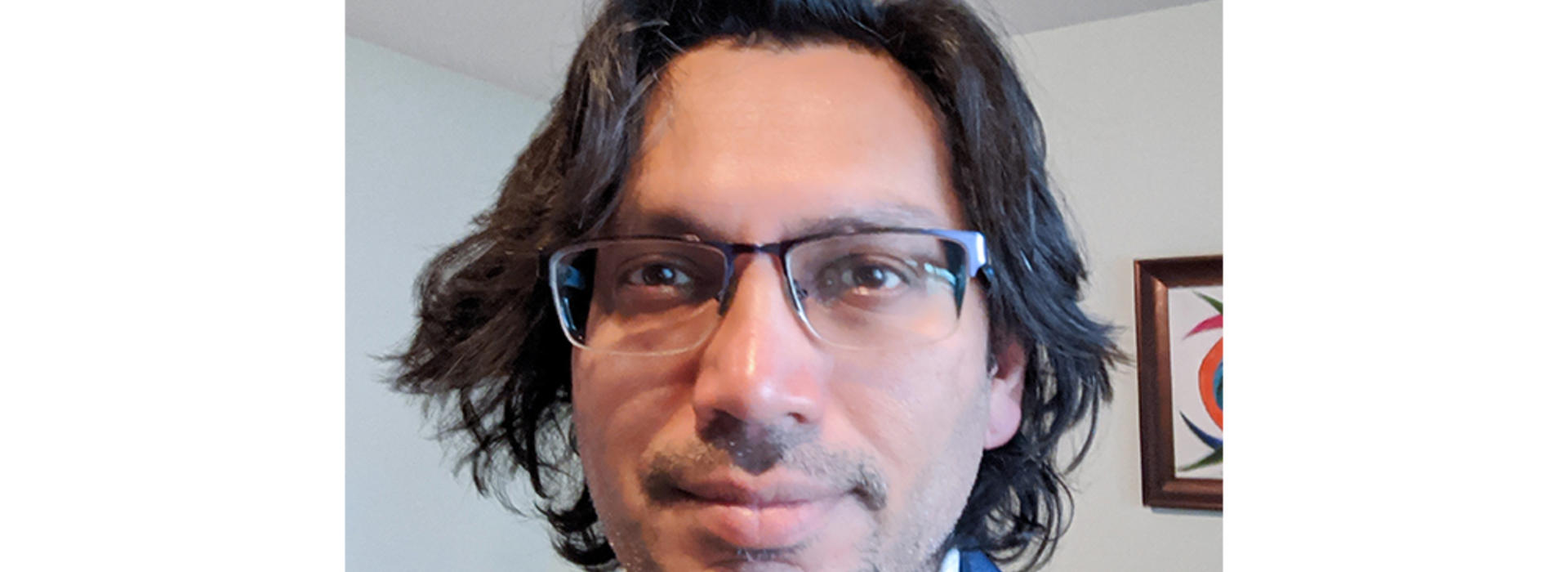
Dr. Rumi Faizer Equips Engineers with Medical Tools, Knowledge for U’s Face Mask Development
The aorta is the largest blood vessel in the body, supplying oxygenated blood to the circulatory system. When healthy, the aorta is elastic and able to expand and contract as the heart pumps blood into it, but with age, it loses that elasticity. Rumi Faizer, MD, brought a passion to discover why that happens to the University of Minnesota Medical School in 2012. Today, he is an associate professor in the Department of Surgery and an aortic surgeon.
“In a healthy person, the aorta is a very elastic tube. When the heart beats, the aorta modulates the pulse pressure in addition to the blood flow. If it were a rigid tube, then all the organs would kind of get hit with the pulse as the heart beats,” Dr. Faizer said. “As we age, we lose that modulation from the aorta—it becomes stiffer—and we think that that’s related to a lot of the development of cardiovascular disease as we age.”
Engineering a New Aortic Stent Graft
One of the most common ways to treat blood vessel tears or aortic aneurysms involves implanting a stent graft to keep the damaged area from rupturing. Despite their usefulness, Dr. Faizer says the rigidness of today’s stent grafts, combined with a stiffening aorta, only add to a less than ideal physiology for the patient.
“The stent grafts are even more rigid than the aorta,” he said. “So, we’ve been designing a new stent graft that is able to pulse and absorb that pressure weight.”
This new aortic stent graft is being designed in partnership with the College of Science and Engineering. The group has received a couple patents and will soon apply for a grant from the National Institutes of Health to study its efficacy.
Engineering a Filtering Face Mask
But, this work on a new stent graft came to a halt at the onset of COVID-19. Instead, his connections with the University’s engineering group linked him into conversations about how to address one of the issues surrounding COVID-19—a need for more personal protective equipment.
“They wanted to create face masks, and the translation between the engineering team and their awareness of what’s going on clinically, there’s this missing hole that I’m able to fill,” Dr. Faizer said.
Dr. Faizer helped brainstorm, product test and optimize one mask prototype after another by bringing each of them into the hospital to test their fit using special equipment. He recognized a need to speed up that process and asked hospital leaders for extra fit testing equipment to give directly to the mask designer.
“They said, ‘Take what you need.’ Then, every time she made a change to the design, she was able to test it right away to see if it had a better seal,” he said.
That change in pace helped the group quickly finalize a mask design—one that will soon be in production to form an emergency stockpile for local hospitals.
“If you can’t go to work, and that’s the best way you can keep your city safe, you try to come up with things you can do to help. You could try to learn a language, but that’s not working out so well for me,” Dr. Faizer laughed.